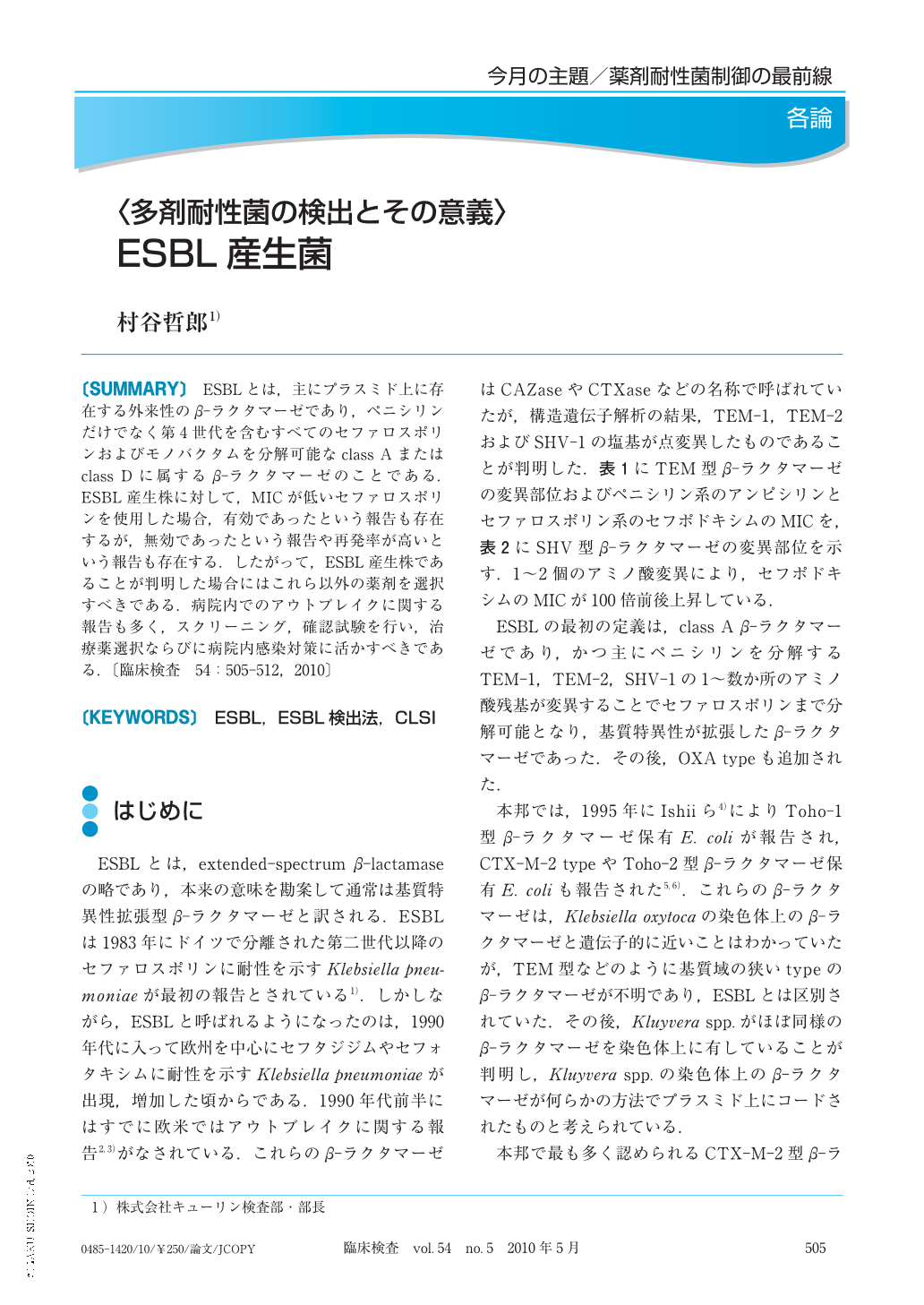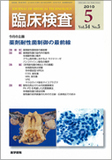Japanese
English
- 有料閲覧
- Abstract 文献概要
- 1ページ目 Look Inside
- 参考文献 Reference
ESBLとは,主にプラスミド上に存在する外来性のβ-ラクタマーゼであり,ペニシリンだけでなく第4世代を含むすべてのセファロスポリンおよびモノバクタムを分解可能なclass Aまたはclass Dに属するβ-ラクタマーゼのことである.ESBL産生株に対して,MICが低いセファロスポリンを使用した場合,有効であったという報告も存在するが,無効であったという報告や再発率が高いという報告も存在する.したがって,ESBL産生株であることが判明した場合にはこれら以外の薬剤を選択すべきである.病院内でのアウトブレイクに関する報告も多く,スクリーニング,確認試験を行い,治療薬選択ならびに病院内感染対策に活かすべきである.
Since the first description of plasmid-mediated ESBL in 1983, ESBL-producing gram-negative organisms have posed a significant threat to hospitalized patients due to their hydrolyzing activity against expanded-spectrum cephalosporins, which are often employed in the treatment of hospital-acquired infections. Detection of ESBL producers provides clinicians with helpful information. Treatment of infections caused by ESBL-producers with penicillins, all cephalosporins or monobactams may result in treatment failure even when the causative organisms appear to be susceptible to these antimicrobial agents by routine susceptibility testing. Regarding patients colonized or infected with ESBL-producers, it is important to carry out contact precautions to avoid hospital transmission. These benefits warrant the detection in clinical laboratories of ESBL-producing organisms.

Copyright © 2010, Igaku-Shoin Ltd. All rights reserved.


